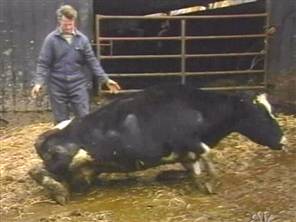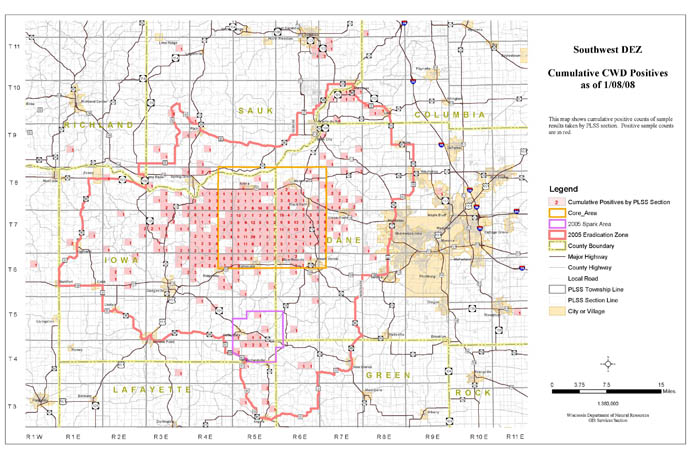It’s still no laughing matter — Al Franken on coal gasification
February 17th, 2008
Earth to Franken – IGCC is a pipedream!
Published today in the Bemidji Pioneer:
Brad Swenson Bemidji Pioneer
Published Sunday, February 17, 2008
The operative word the electorate seems to be embracing this election cycle is “change.”And, in Minnesota, you probably couldn’t get a more obvious “change” than in Al Franken, a Democrat vying for the party nomination to run against incumbent Republican U.S. Sen. Norm Coleman.
Franken has never held an elective office, has never until recently shown an interest in organized party politics (although he hasn’t been shy about which way he leans), he’s not a lawyer or a career politician and while growing up in Minnesota, Franken was born in New York and spent most of his life in New York.
My goodness, the man’s a comedian, a funnyman — a satirist.
Yet the former “Saturday Night Live” writer and actor draws a crowd most places he gathers for meet-and-greets, including 250 people recently in a Wadena café and likewise packed a Park Rapids café.
“Once they hear me speak, they know I speak from the heart, from the head and from the gut,” Franken told me a week ago as he overnighted in Bemidji on the way to a Senate candidate debate in International Falls. He’s on the trail with Twin Cities attorney Mike Ciresi and St. Thomas University Professor Jack Nelson-Pallmeyer.
He’s visiting a lot of rural towns, especially in northern Minnesota, not so much for name recognition — thanks to his “other” career — but to drill in that he understands Minne-sota and lived in Minnesota (St. Louis Park). It’s why he’s run-ning barrage of television ads now, to solidify his Minnesota connection before anyone can tag him a “Hollywood” candidate because of his entertainment friends and their money.
“Going around, I discovered it was important for people to know I grew up in Minnesota,” he said.
Minnesotans do want to know their candidate, want to eyeball him or her in person, and want to know what they say about issues important to them. In our talk at the Green Mill, just a mention of Coleman’s role as chairman of the Permanent Subcommittee on Investigations and the war in Iraq wound Franken up for 15 minutes. And it must be touchy, as Sen. Coleman called me late last week to spend a half hour refuting all that Franken had said, quipping that Franken tells “half-truths and whole lies,” something sounding suspiciously like an Al Franken book title.
But what does candidate Franken know about northern Minnesota? Obviously, as a New Yorker, he hasn’t spent much time in the woods with a deer rifle. In fact, last fall Franken went hunting for the first time and had with him as his guide U.S. Rep. Collin Peterson, DFL-7th District, an avid hunter and founder of the Congressional Sportsmen’s Caucus.
“My briefing was, ‘Shoot this,’ and a picture of a pheasant rooster, ‘Not this — Collin,’” Franken said of the second picture of Peterson. “Mission accomplished. I shot two roosters and not Collin.”
That episode aside, Franken said people have the right to have guns for collection, protection and hunting, recreation and target shooting. “I don’t think people should have artillery,” he said with a deep chuckle.
More seriously, “I think we should just enforce the laws that we have,” he said.
Franken’s been criticized of being a little light on farm is-sues, but says he’s learning. And he says he knows of the plight of northern Minnesota’s timber industry, and hopes a niche can be found in renewable energy production from the forest.
“Ag is obviously important to this state and it’s important to this country,” he said, adding that “I’ve been consulting with Collin Peterson, as well.” Peterson is chairman of the House Agriculture Committee.
“I do think that the green economy will be very good for rural Minnesota,” he said. “And also we’re talking about renewables and energy efficiency, and creating jobs through both of those.”
He’s been asked about the Iron Range’s current build-up and the need for more energy, with a “clean-coal” coal gasifi-cation plant proposed to gen-erate power. While it seems Franken may oppose the plant, he says he supports the techn-ology but is unsure if it’s appro-priate for that place at this time.
“The idea of coal gasification where you can sequester the CO2 is a technology that we ought to develop,” Franken said. “I’m just not sure at that plant is the best project. We want to get the most bang for the buck, and you want to make sure it’s sequestered properly.”
The technology is needed, he said, as China and India put up a coal-fired plant once a week. It does no good for the United States to seek a zero-carbon footprint when the other two nations continue unabated with carbon emissions.
“We need international agreements,” Franken said, such as a global cap-and-trade program to control carbon dioxide emissions, or the ability to sell U.S. clean-coal technology abroad.
On forestry, Franken says one of his strongest supporters is Sen. Tom Saxhaug, DFL-Grand Rapids, who specializes in forestry issues. “Tom is a big champion of sustainable forests, and I think there’s tremendous possibilities of using forest products for biomass gasification.”
If it’s any indication of his willingness to learn northern issues, Franken has been also been endorsed by Assistant House Majority Leader Frank Moe of Bemidji, Rep. Brita Sailer of Park Rapids and Sen. Rod Skoe of Clearbrook. He also recently won the endorsement of former U.S. Agriculture Secre-tary Bob Bergland of Roseau, who also served as U.S. House member from the 7th District.
Brad Swenson is the Bemidji Pioneer’s Opinion page and political editor.
Health benefits of coal
February 15th, 2008
BENEFITS OF COAL???
Can you describe the health benefits of coal, the economic benefits of coal?
Coal has costs, we all know that. A refresher… Remember Dr. Ed Anderson’s testimony in the Mesaba case, about the cost of pollution, health impacts of coal, and the studies we included:
Edwin Anderson, M.D. Rebuttal Testimony
Ex. 3 – Environmental Costs of Diseases and Disabilities
Ex. 4 – Environmental Pollutants and Disease in American Children
Well, there’s been this recurrent theme of the “benefits” of coal, sort of like when the Mayor of Hoyt Lakes, regarding all the mercury testimony, said, I SWEAR TO DOG, that “We’re used to mercury here!” Anyway, Ed Anderson, M.D., had submitted the above in the Excelsior Energy PPA docket, and “the benefits of coal” came up at the Mesaba hearing two weeks ago when Alan Muller was questioning Excelsior’s witness Skurla, from the Uof M Duluth Labovitz Center:
Q. Table at 3.4-2 identifies, by my arithmetic, a total of something over 15 million pounds per year of regulated air pollutants. And without getting into detail, let me just suggest, if I may, for purposes of this question, suppose that 15 million pounds a year of regulated air pollutants would constitute a negative impact. If those 15 million pounds a year air pollutants were to cause asthma, bronchitis, cancer of the lungs and so on and so forth, in a certain number of people, those people would need — might very well, probably would seek medical care for those problems,and they would buy inhalers, they would go to the emergency room, they would experience surgicalprocedures at the local health care facilities and so on. In your model would that be a component of economic stimulus?
MR. STARNS: Object to the form of the question.
JUDGE MIHALCHICK: Can you answer that?
A. Not really. I don’t — I mean, he’s asking a hypothetical question I don’t quite understand. I mean, he’s trying to lead me to say that it’s going to cause economic damage, and I’m not in a position to — I’m not an environmental person, so I’m not going to say that that’s necessarily going to happen. There’s other witnesses that maybe could answer that question.
Q. I appreciate that, and I’m trying to focus my question to you on the specific issue of whether —
JUDGE MIHALCHICK: Is the question whether his model included such a cost?
Q. Yes, whether increased use of health care facilities, funeral homes and so on and so forth would constitute a form of economic stimulus that would be acknowledged as such in your model?
A. I mean, if you want to look at it in a bizzare way, yeah.
Q. How is that bizzare?
A. Well, funeral homes are businesses. Hospitals are businesses. They need sick people, I mean, if you want to look at it. We’re not taking that into account, taking that pollution into account here, and you need to ask other witnesses about, you know, the environmental impacts or the effects of those.
MR. MULLER: I don’t have anything more. Thank you.
The theme… continues in the Grand Forks Herald, in an opinion piece, where the writer, a STATE SENATOR for Dog’s sake, says:
Externalities are artificial values that are intended to offset hidden impacts to society and the environment. However, Minnesota was only looking at what would be considered as negative externalities. There also are positive aspects of coal-based electricity that weren’t considered. For example, there have been peer-reviewed studies that show how low-cost, reliable coal-fired electricity contributes to the health and wealth of Americans, because those Americans then have more money available for health care, fresher foods and refrigeration to preserve foods longer.
Really, coal is good “because those Americans then have more money available for health care…” Here’s the link:
Yup, ain’t it a good thing that we’ve got that money for health care? I’m sure that will make Dr. Anderson feel a lot better about coal… Eh, Ed? We’ll all feel better…
Mad Cow Beef & MN Dept of Education
February 11th, 2008
Seems folks really do read this blog — the last post got me a full inbasket of primary documents, verrrry interrrresting… the undercurrent of concern is strong, with the primary focus that “No instances of illness have been reported…” but we all know incubation takes a long time.
FULL DISCLOSURE: I must confess that I was a meat hauler for a lot of years, hauling tubs and boxed meat from the Midwest to California, and I’ve spent way too much time siting around slaughter houses waiting to get loaded… er… waiting for the truck to get loaded, so I have a fair amount of first hand knowledge of what goes on there. Needless to say, I’m essentially a vegetarian.
Overall, it seems the Dept. of Education got right on it. On one hand, it’s a good thing that the MN Dept. of Education went public and brought this beef with beef to our attention. It’s good they got on the schools and had it inventoried. It looks like it was just a one day exercise, with this update a week later, so that’s not too bad. St. Paul, New York City and Cos Cob are a few others districts that have taken action. On the other hand, what do we expect! Given federal inspections are nominal at best, we’ve got a problem here, folks… it’s not like this is something they could hide… For years, the industry has been recommending irradiation of meat rather than clean up, and disregard for basic common sense practices, much less regulations, shouldn’t surprise us.
Here’s the article from L.A. Times:
Here’s what the Dept. of Education sent out, but notice WHEN they got this update out, conveniently AFTER everyone had shut down for the day:
The attached memo and lists went to Minnesota superintendents a few minutes ago. Here are the highlights:
* No instances of illness have been reported in connection to this product and there is also no other evidence at this time that this product represents an increased health risk. If impacted districts become aware of illness potentially related to this product, we encourage them to contact the Minnesota Department of health immediately at: 651-201-5414.
* On Monday, the Minnesota Department of Education released a list of schools and organizations that have potentially received Westland beef. As a result of our efforts to contact school districts, distributors and processors to identify the location of this product, we have been able to narrow that list down to 374 schools and organizations that likely received Westland beef. (Attachment #1)
* Of the schools and organizations that received Westland beef, we have identified 120 that currently have unused product. (Attachment #2) We have contacted those schools and organizations and instructed them on how to isolate the product.
*
The majority of the Westland beef that was sent to Minnesota was likely served to students before the USDA issued its advisory. Based on the information that has been gathered by the Minnesota Department of Education, approximately 60,000 pounds of the initial 240,000 pounds of Westland raw beef sent to Minnesota has not been used and has been isolated.* The Department of Education has also been able to identify approximately 15,500 pounds of Westland beef that was delivered to Minnesota schools as processed products, including beef crumbles and hamburger patties. That identified product has also been isolated.
* Today, we will be reporting the information we have collected to the USDA, which is compiling information by region to determine how much of the product remains in the food distribution supply chain.
*
Based on its investigation, the USDA will make a decision, regarding the status of unused product. We expect their decision within the next several days and will keep you up-to-date.Christine Dufour
Deputy Communications Director
Minnesota Department of Education
1500 Highway 36 West
Roseville, Mn 55113
Ph.: 651.582.8720
Cell: 612.306.0895
Dept. of Health Beef – Feb 7 2008
Schools that likely received Westland Beef
Schools with Westland Beef on hold
So it seems likely that the schools on the “likely” list that aren’t on the “hold” list have served up that beef.
Meanwhile, Westland Hallmark Meat Company has suspended operations. SEE WESTLAND WEB PAGE
One thing I don’t understand is why the district would buy beef from all the way out there, pay for shipping at over $2,000 a truckload, increasing the cost by about $0.225/lb. Oh well… guess it’s like thinking those in Illinois would buy SD or MN wind and pay for the transmission when they’ve got 10,000MW in the MISO queue.
Downer cows = Mad Cow disease?
February 11th, 2008
The US has cut testing for Mad Cow disease, or bovine spongiform encephalothopy:
So when I saw the reports recently that Minnesota told schools not to serve beef produced at a plant where they’d mistreated animals, my red flags went up, because since when is humane treatment of animals something businesses and state agencies care about? Then I heard that the issue was that they were mistreating “downer cows” and dragging and forklifting them into the plant. And that’s something completely different, downer cows = mad cow disease in some cases, it’s a symptom. Were these animals tested? Or were they just run through the line and shipped on out to MINNESOTA SCHOOLS? WTF? And the silence about the relationship of mad cow to downer cows at the slaughterhouse is deafening.
Here’s how it was framed in the STrib – note “mad cow” and “testing” is not mentioned:
Minnesota orders schools not to use beef from California plant
Minnesota school districts told to stop using meat from California company embroiled in sick-cow controversy.
Last update: January 30, 2008 – 11:27 PM
The Minnesota Department of Education said Wednesday that it has ordered state school districts to stop using beef from a California company accused of abusing sick animals it later processed for human consumption.
Westland Hallmark Meat Co. delivered ground beef to schools in 36 states via a U.S. Department of Agriculture program between Oct. 26 and Nov. 5, 2007, the agency said.
The Humane Society of America released a video on Wednesday that shows workers at the Chino, Calif., plant kicking, shocking and prodding sick cows into a slaughterhouse.
The USDA has suspended the company from federal food and nutrition programs.
PATRICE RELERFORD
And today I was checking up on things back at home, and found this, that it was sent to schools near Red Wing:
Suspect beef may have been sent here
Mike Longaecker The Republican Eagle
Published Friday, February 08, 2008Beef from cattle shown on video being dragged by forklifts and other methods described as inhumane was likely shipped to several area schools, officials announced Thursday.
Cannon Falls, Goodhue, Kenyon-Wanamingo, Pine Island and Zumbrota school districts all likely received the beef from Westland Hallmark Meat Co., according to the Minnesota Department of Education. A total of 375 Minnesota schools and districts were on the list.
According to a department news release, no instances of illness were reported in connection to the beef and there is no other evidence the beef represents an increased health risk.
Meat from the plant has been placed on hold by the federal government since Jan. 30, the same day the U.S. Department of Agriculture indefinitely suspended Westland’s meat products from the National School Lunch Program.
Westland halted operations Feb. 1 after allegations surfaced that cattle at its California facilities were being sent to slaughter under inhumane conditions.
Undercover video released by the Humane Society of the United States shows “downer” cows — those unable to walk — being skidded and dragged through a processing plant.
Cannon Falls and Kenyon-Wanamingo were among 120 Minnesota districts identified by the state that had unused meat as of Thursday. Those districts have been contacted by the state and instructed how to isolate the product.
About 15,500 pounds of Westland beef sent to Minnesota was sent as processed meat products, including beef crumbles and hamburger patties, according to the state.
Most of the Westland beef sent to Minnesota was likely served to students before the USDA issued its advisory warning earlier this week.
Based on state research, one-third of the 240,000 pounds of Westland’s raw beef that has not been used is isolated.
The USDA will determine what should be done with the meat that hasn’t been used.
You can see the video here on the Humane Society’s site, where you’ll note that they DO point out the correlation between Mad Cow and downer cows, that 12 of the 15 known cases of mad cow were downer cows:
I mean really, Mad Cow Disease, Pissy Deer Disease (Chronic Wasting), Sheep Scrapie, Creutzfeld-Jakob variant… Come on, folks, wake up and smell the cow shit!
Here’s what the World Health Organization has to say about Creutzfeldt-Jakob variant:
Think it doesn’t happen here? Check these Chronic Wasting maps from Wisconsin:
Farmed Deer with CWD – info HERE!
Maybe when big ag is held accountable, LIABLE, for humans with Creutzfeldt-Jakob variant, maybe then things will change…
In the meantime, demand rigorous testing. MEAT – it’s NOT what’s for dinner…
Rep. Tschumper takes on ethanol
February 9th, 2008
Today’s StPPP reports that Rep. Ken Tschumper is taking on ethanol, demanding environmental review. THANK YOU, KEN! Here’s the article:
Lawmaker proposes environmental review of new ethanol plants
BY DENNIS LIEN
Pioneer Press
Article Last Updated: 02/08/2008 04:03:42 PM CSTA southern Minnesota lawmaker said today he plans to introduce a bill in the state House next week that would require mandatory environmental reviews of all new ethanol plants.
State Rep. Ken Tschumper, DFL-LaCrescent, said such plants have environmental impacts, and should face the same types of scientific study that many other large ventures undergo. Besides using substantial quantities of groundwater and polluting the air, corn-based ethanol plants have led to increases in soil erosion, fertilizer runoff, and herbicide use, according to Tschumper.
This will go to the House Environment Committee.
CLICK HERE for House Environment Committee members & contact info.
Here’s his own press release with a little more detail:
TSCHUMPER PROPOSES ENVIRONMENTAL IMPACT STATEMENTS FOR ETHANOL PLANTS
ROCHESTER, MN – State Representative Ken Tschumper (DFL – Houston and Fillmore counties) announced new legislation today that would require mandatory Environmental Impact Statements (EIS) for all new ethanol plants in Minnesota. Facilities that produce ethanol in Minnesota are currently exempt from having to do an EIS in most cases.“Congress and various state legislatures have passed generous subsidies to promote the development and expansion of ethanol plants and mandated various levels of ethanol content in gasoline,” Tschumper commented. “Some states, including Minnesota, have gone even farther by exempting ethanol production facilities from the normal environmental review and regulation that such projects of similar size would undergo in other sectors of the economy.”
However in the last several years existing ethanol facilities have expanded and new plants are proposed that are much larger than in the past.
“The environmental impacts of this expanding ethanol production are causing great concern,” Tschumper emphasized. “Huge demands on groundwater, increased air pollution, heavy demands for rail transportation, increased soil erosion and fertilizer runoff, negative impacts on livestock prices and the increased use of atrazine, (a pesticide known to cause prostrate and uterine cancer in humans) are impacting our lives, our financial stability, and our environment.”
This is especially true for Minnesota. Many of the rural areas where ethanol plants exist or are proposed also have important livestock farming, especially in southern Minnesota.
“As we all know, the most important resource we have in southern Minnesota is our abundant, high quality supply of groundwater. Our livestock industry is very dependent on this critical resource, ” Tschumper, a dairy farmer himself, added.
Since the Groundwater Protection Act was passed in 1989, the State of Minnesota, working with county governments, has engaged in many initiatives to monitor and protect our precious groundwater resources.
“Unfortunately our groundwater resources on which our livestock industry is so dependent, is now being threatened by this new generation of ethanol plants. I plan on doing everything I can to protect our groundwater and our livestock industry,” Tschumper promised.
Ethanol production uses 5-6 gallons of high quality groundwater for every gallon of ethanol produced. An ethanol plant capable of producing 100 million gallons of ethanol annually will draw 500 million to 600 million gallons of water from an aquifer annually. This tremendous draw down in such a short period of time will challenge the ability of many aquifers to recharge themselves and will expose cleaner, higher quality aquifers to more pollution from pesticides and fertilizers. This has long-term implications for not only our livestock farming but also our small towns and other rural businesses.
Environmental Impact Statements are a complete scientific study of all the environmental, economic and health impacts of a proposed project.
“It is important to understand that Environmental Impact Statements do not halt projects,” said Rep. Tschumper. “They simply provide more science-based information as to the long-term consequences of these projects for our environment, our economy, and our health. Requiring an EIS for all future ethanol production facilities is reasonable, responsible and necessary.”
The EIS process that ethanol facilities will do under this legislation is similar to the standard environmental review required for projects of similar size in other sectors of the economy.
“Many large industrial and commercial projects in Minnesota are required to complete an Environmental Impact Statement before they can be built,” said Rep. Tschumper. “Prior to 2004, ethanol plants of a certain size were required to do the same, but they were exempted from this requirement that same year. Clearly that was a mistake given the growing environmental concerns surrounding current ethanol production practices.”
Rep. Tschumper will introduce his bill when the legislative session resumes February 12, 2008.





